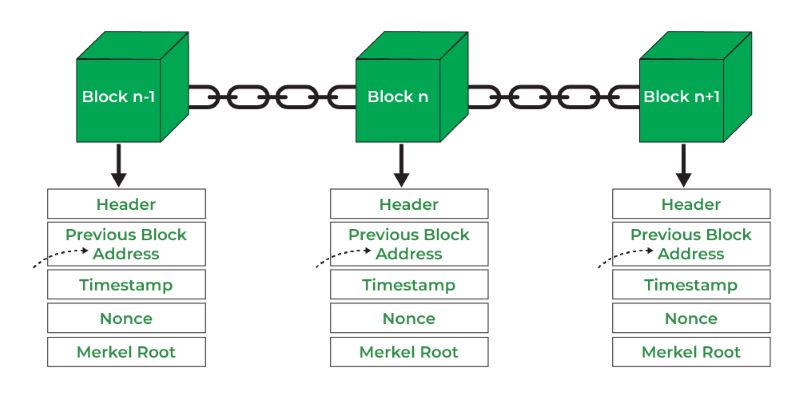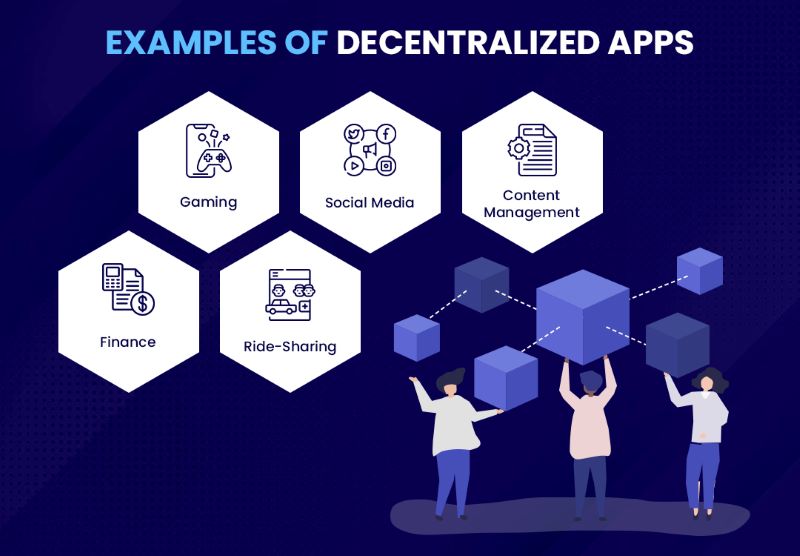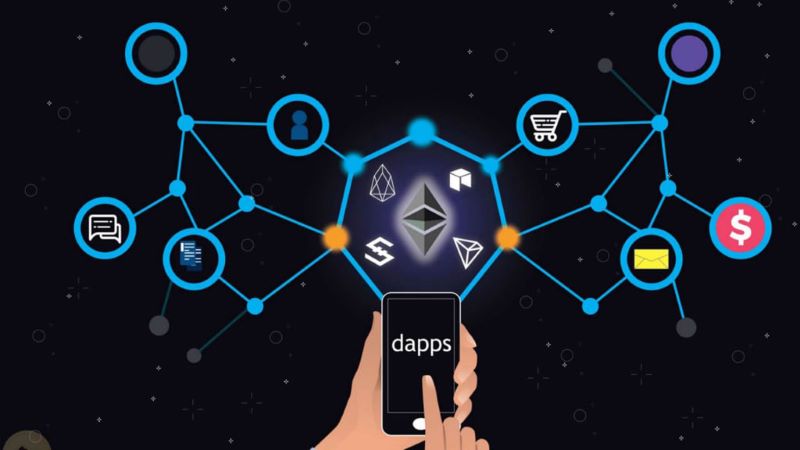What is blockchain architecture? Imagine a tower of blocks, each linked with undeniable strength, forming the backbone of digital trust and security. As an expert, let me guide you through this intricate structure that’s revolutionizing how we view data. In the digital world’s playground, blockchain architecture is the most robust kid on the block, and it’s my job to show you why.
From distributing ledgers to securing transactions across global networks, this architecture is a game-changer. So, buckle up as we dive into the core of blockchain – where every piece is a building block of a transparent, unbreakable chain.
The Fundamentals of Blockchain Architecture
Understanding Distributed Ledger Technology and Blockchain Components
Imagine a huge digital book. Everyone can write in it. But no one can erase anything. That’s like blockchain fundamentals. This book is called distributed ledger technology. It’s a trusty way to keep records. Everyone agrees on what’s written. It’s like a group project, but no cheating!
In this book, blockchain components matter a lot. You’ve got blocks, like pages in our book. They store info on trades, like who sent what. Each block has a special lock, called a cryptographic hash function. It’s a fancy word for a code no one can crack. This keeps our blocks safe from sneaky changes.
Think of peer-to-peer systems as friends sharing toys. Only here, no middleman or boss. Everyone’s equal, trading directly. It’s a fair game for everyone.
Have you heard of LEGO blocks? They connect to build stuff. Digital ledger design is similar. Blocks connect to make sure everything fits. And if it fits, it sits tight!
Decentralized consensus mechanisms sound complex, huh? It just means everyone agrees without needing a boss. Think of playing a game where everyone’s votes count to make a rule. That’s what this is.
Now, should we use proof of work or proof of stake? Like choosing between kickball or hide and seek. One uses power, the other uses trust in a game. Proof of work makes computers solve puzzles to add a block. Proof of stake picks the player with the most game pieces to add it. Both are ways to agree on what goes in our book.
The Significance of Node Networks in Blockchain
In our digital book world, think of node network as the helpers. They’re computers linked together to keep our book up-to-date. Like a team of librarians, making sure every copy is the same.
Every node is important. If one goes to nap, the others keep working. They share the load and watch each other’s backs. That’s fault tolerance. It’s like when you balance on one foot, then swap to the other. Even if one slips, you won’t fall!
Public vs private blockchain, what’s that? So, a public blockchain is a park. Anyone can come play. A private blockchain is like your backyard. Only friends and family.
For the builders in the crowd, blockchain data structure is nifty! Think of it as the way we stack our LEGO blocks. Careful and close, so they’re strong. That’s transaction block composition. Each one tells a story of who gave what to whom.
This architecture keeps our digital book safe and sound. Each one’s special, each one matters. Like a fingerprint. It’s a strong spine holding up our book of trades, deals, and promises.
Remember, this book never lies. Because once something is written, blockchain immutability means it’s there for keeps. Like writing in pen, not pencil.
And that’s the bare bones of this marvel. It’s fair, it’s strong, and it’s got everyone’s back. Isn’t that something?
The Mechanics of Decentralized Consensus
Proof of Work vs. Proof of Stake: Weighing the Pros and Cons
As a Blockchain Solutions Architect, I work with building blocks of trust. These blocks form a chain, linking data in ways that are near unbreakable. Now, imagine a group of people who don’t know each other, each holding a piece of a puzzle. They all want to agree on where each piece goes. This is a lot like what we call decentralized consensus mechanisms—types include “proof of work” and “proof of stake.”
Proof of work is an older way. It uses lots of power because it makes computers solve hard puzzles to agree on new blocks. Think of it like a race where the fastest runner wins a prize. This race is tough on the computers and can ramp up your electric bill quick. It keeps the blockchain secure, but boy, does it love to gulp energy.
Proof of stake is newer and kinder to our planet. It picks block creators based on how many coins they hold and are willing to “lock up” as security. It’s like being part of a club—the more you put in, the more say you have. There’s less racing, so computers can relax a bit, making it less thirsty for power.
Both have their pros and cons. Proof of work is like an old, reliable truck—it gets the job done, but it’s loud and drinks fuel like water. Proof of stake is like an electric car—quieter and cleaner, but still working to prove it can haul the same heavy loads.
An Introduction to Smart Contracts on Blockchains
Let’s talk about those rules that run by themselves on blockchains: smart contracts. These are like vending machines. You choose a snack, pop in your money, and out comes a treat. In blockchain, you set rules for a deal, and when the rules are met, the deal is done automatically.
Developed first for public blockchains, they’re like game-changers for doing business. They cut out middle folks like banks or lawyers in some cases. Both you and I can trust the deal without having to trust each other.
Now think about when you keep a secret. Only certain pals should know, right? That’s where private blockchains come in. They use smart contracts too but in a closed setting, where only invited folks can join in.
Speaking of joining and playing fair, how do we keep everyone honest? We use peer-to-peer systems and node networks to spread copies of the ledger around. That way, no one person can mess with the records without everyone else noticing.
We use fancy math like cryptographic hash functions to make sure no one’s cheating. Each piece of data gets a unique fingerprint. Chain these together, and you get a blockchain. If someone tries to slip in a fake block, the fingerprints won’t match, and it’s easy to spot.
And here’s a really cool part: Merkle trees. Imagine a family tree for data. Only the top of the tree, called the root, gets stored in the blockchain. It verifies all the data below without needing to check every single piece. This saves space and speeds things up.
In the end, designing blockchain solutions is all about making the right calls for security, speed, and fairness. It’s a balance, a bit like picking the right tool for a job. Sometimes you need a hammer, sometimes a screwdriver. With the right approach, we can build amazing things that stand the test of time.
Inside the Blockchain: Data Structures and Security
Hashing, Data Tamper-Proofing, and the Role of Merkle Trees
Ever wonder how blockchain keeps data safe? It’s like a digital Lego fortress. Each piece, or “block,” holds a bunch of transactions. They all stick together in a certain order, making a “chain.” This is because of a special math trick called “hashing.” When we hash info, it turns into a short code. Change just one bit, and the code changes a lot. This is how we know if someone tries to mess with the data.
Inside each block, we find a Merkle tree. It’s not a real tree, of course. Think of it as a family tree for data. It helps check that all our transactions are the real deal. Each “leaf” is a piece of data. These leaves join to make “branches.” At the top, there’s a “root.” If the root is solid, we know the whole tree is, too.
This setup means it’s super hard to change any old data. To mess with it, you’d have to redo all the math for the Merkle tree and all the blocks after. Imagine trying to build a sandcastle from the top. Yeah, not easy.
Ensuring Robust Blockchain Security Features and Managing Scalability
Now, a lot of folks are part of the blockchain. They have copies of the ledger. So, we need a strong node network, kind of like a lot of watchdogs. They all help make sure everything’s A-OK. This makes our system tough as nails. No one can break it or cheat it easily.
But what about when loads of people want to use blockchain? That’s where scalability comes in. It’s a big word for a simple thing: making sure blockchain can handle more and more action without getting slow or crashing. We’re always finding new ways to do more at once. This way, everyone can use blockchain without a hitch.
So, there you go! That’s how blockchain’s like the champion of data security. And why it’s set to handle whatever we throw at it. It’s all about keeping our digital world safe, fast, and reliable.
Blockchain Through an Integrative Lens
Diving into Blockchain Interoperability and Protocol Layers
Ever wondered how blockchains talk to each other? It’s about interoperability. Think of it like phone carriers. For people to call each other, different phone companies must work together. Blockchains need the same — a way for different chains to connect.
To work together, they use protocol layers. These layers are like steps in a staircase. Each one has its own role. The first is where data gets stored. Then comes the place where computers exchange information. After that, there’s the layer for keeping everything secure. Last is where apps use the network.
Interoperability lets blockchains share data and value. It’s a big deal. It makes new things possible in finance, gaming, and more.
The Intersection of Blockchain and Enterprise: Governance and dApps Integration
What about big companies? They’re eyeing blockchain big time! But they must handle governance — the rules for how things run. It’s like a company having a rule book everyone follows.
They also mix blockchain with dApps — decentralized apps. These are like your phone’s apps but run on a blockchain. This mix helps businesses work smarter and faster. They can track goods, speed up payments, and more with blockchain. It also keeps their data safe and sound.
In short, blockchain is more than Bitcoin. It connects businesses, rules, and tech in new ways. It’s changing how we think about the digital world!
In this post, we explored the building blocks of blockchain. We started with the basics of distributed ledger tech and how all the parts connect. We looked at node networks and their key role. Then, we dove into how blockchains make decisions, comparing Proof of Work with Proof of Stake. Smart contracts got their moment too, showing us new ways to deal with agreements.
Next, we saw the nuts and bolts of blockchain data structures. We talked about how hashing keeps data safe and the job of Merkle Trees. Security and growth were big topics as well. Last, we looked at how different blockchains talk to each other and how big companies are using them with dApps.
This stuff might sound complex, but it’s changing how we handle info and trust. As I share these thoughts, remember that blockchain might be techy, but its impact spreads wide. Thanks for following along; I hope you now see blockchain in a new light and feel ready to dive deeper yourself. Keep exploring!
Q&A :
What are the key components of blockchain architecture?
Blockchain architecture is based on several key components that work together to provide a secure and decentralized system. These include nodes, which are individual computers connected to the blockchain network; the ledger, which records all transactions; the consensus mechanism, such as Proof of Work or Proof of Stake, that validates transactions; smart contracts, which are self-executing contracts with the terms of the agreement between buyer and seller directly written into lines of code; and the cryptographic hashing algorithm, which keeps the data secure and tamper-proof.
How does blockchain ensure security and integrity in its structure?
Blockchain’s structure contributes greatly to its security and integrity. It uses a combination of cryptographic techniques, including hash functions and digital signatures, to create a secure and unalterable record of transactions. Each block contains a unique hash of the previous block, creating a linked chain that is nearly impossible to alter without detection. Moreover, the decentralized consensus mechanism requires multiple nodes to agree on the validity of transactions, making tampering or hacking the system incredibly difficult.
Can you explain the decentralized nature of blockchain architecture?
The decentralized nature of blockchain architecture means that there is no central authority or single point of control. Instead, the ledger is distributed across a wide network of nodes, each having a copy of the entire blockchain. Changes made to the ledger are reflected across all copies, requiring consensus from a majority of nodes. This not only ensures that all transactions and data are transparent and traceable but also prevents any single point of failure, making the blockchain incredibly resilient against attacks and manipulation.
What role do nodes play in the blockchain network?
In a blockchain network, nodes are the individual computers that connect to the network and have various roles, depending on their capabilities. Some nodes, known as full nodes, hold a complete copy of the blockchain and validate transactions and blocks. Others may participate in creating new blocks if they are miners or validators. All nodes work together to maintain the integrity and continuity of the blockchain, ensuring that the data is up-to-date and consistent across the network.
How is new data added to a blockchain?
New data is added to a blockchain through a process known as mining or forging, depending on the consensus mechanism used. When a transaction is initiated, it is first verified by nodes within the network. Once verified, it’s bundled with other transactions to create a new block, which is then subjected to a consensus process. In systems like Bitcoin’s blockchain, miners compete to solve complex cryptographic puzzles — the first to solve the puzzle gets the right to add the new block to the blockchain and is rewarded with cryptocurrency. Once the block is added, it becomes a permanent and unalterable part of the ledger.



